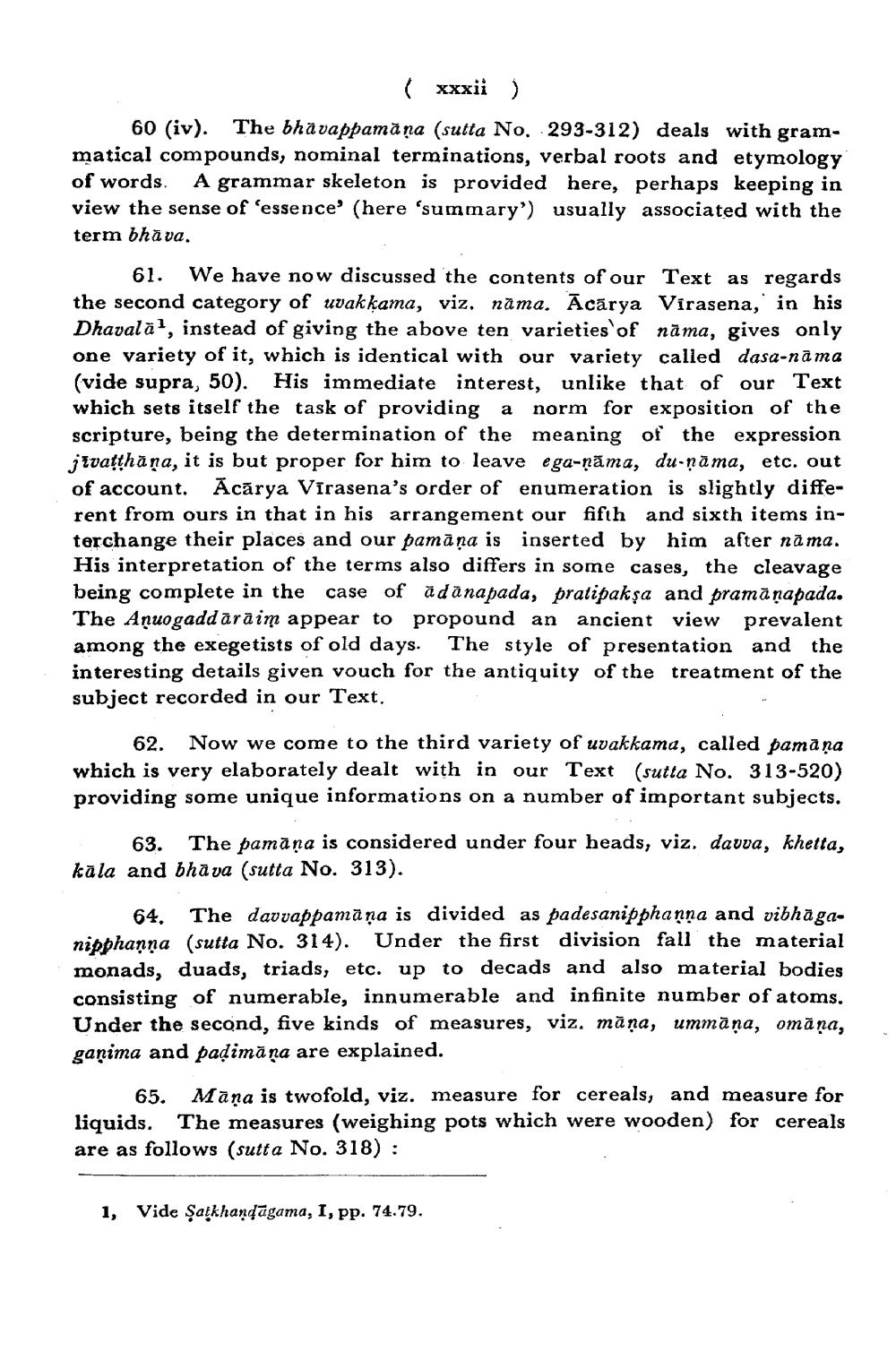________________
(xxxii) 60 (iv). The bhävappamăna (sutta No. 293-312) deals with gram. matical compounds, nominal terminations, verbal roots and etymology of words. A grammar skeleton is provided here, perhaps keeping in view the sense of 'essence' (here 'summary') usually associated with the term bhāva.
61. We have now discussed the contents of our Text as regards the second category of uvakkama, viz. nama. Ācārya Virasena, in his Dhavala?, instead of giving the above ten varieties of nāma, gives only one variety of it, which is identical with our variety called dasa-nama (vide supra, 50). His immediate interest, unlike that of our Text which sets itself the task of providing a norm for exposition of the scripture, being the determination of the meaning of the expression jīvatthāna, it is but proper for him to leave ega-ņāma, du-nama, etc. out of account. Acārya Vīrasena's order of enumeration is slightly different from ours in that in his arrangement our fifth and sixth items interchange their places and our pamāņa is inserted by him after nama. His interpretation of the terms also differs in some cases, the cleavage being complete in the case of a dānapada, pratipaksa and pramänapada. The Anuogadd ārāim appear to propound an ancient view prevalent among the exegetists of old days. The style of presentation and the interesting details given vouch for the antiquity of the treatment of the subject recorded in our Text.
62. Now we come to the third variety of uvakkama, called pamāna which is very elaborately dealt with in our Text (sutta No. 313-520) providing some unique informations on a number of important subjects.
63. The pamāṇa is considered under four heads, viz. davva, khetta, kāla and bhāva (sutta No. 313).
64. The davvappamāṇa is divided as padesanipphanna and vibhāganipphanna (sutta No. 314). Under the first division fall the material monads, duads, triads, etc. up to decads and also material bodies consisting of numerable, innumerable and infinite number of ato Under the second, five kinds of measures, viz, māna, ummām ganima and padimăna are explained.
65. Māna is twofold, viz. measure for cereals, and measure for liquids. The measures (weighing pots which were wooden) for cereals are as follows (sutta No. 318) :
1, Vide Șatkhandāgama, I, pp. 74.79.




